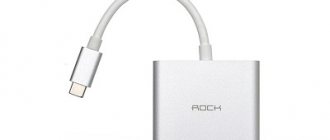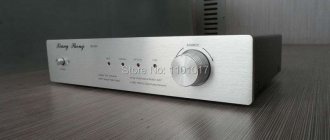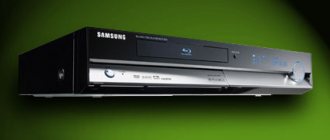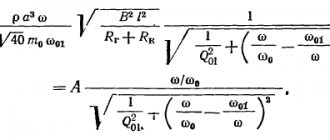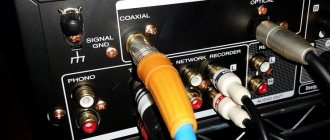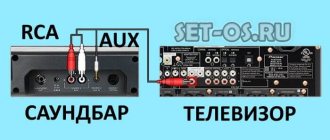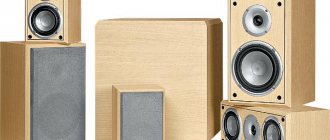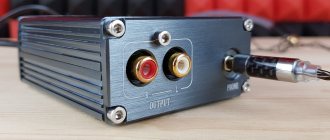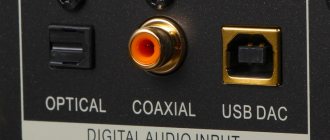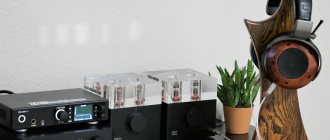Description
Latest updated version: U8 V2.1
(13-10-2017)
Gold Version ($72.99): The America SITIME Ultra Low Jitter No Temperature Drift and Low Phase Noise Oscillator. Beijing green cube transformer.
Black Option ( $92.99): Using 2 pcs ultra high precision 0.1PPM gold plated low phase noise generator. Beijing green cu be transformer.
Silver Version ( $108.99): Using 2 pcs ultra high precision 0.1PPM gold plated low phase noise generator. Imported taema transformer.
USB audio XMOS asynchronous receiver circuit is one of the most outstanding asynchronous USB audio programs. By a large number of high-quality manufacturers used, it has almost become the standard for high-end USB audio applications.
People's Transports or XMOS XU208 (2018), Amanero, CM6631a
The steady trend of a modern digital-to-analog converter (DAC/DAC) appearing in audiophile circuits automatically poses new challenges.
How to feed a clean digital signal to the DAC, what components should I use for this? I’m unlikely to be mistaken in assuming that many people use ordinary, insufficiently high-quality CD or DVD players for these purposes, while others immediately connect the DAC via USB to the computer.
In all cases there are pitfalls. Desperate heads buy external high-end transport, but today we will talk about much more affordable solutions that offer a better price/sound ratio.
You may not have come across this area of audio, but digital transports greatly influence the sound quality and final musical resolution, and even more so, they influence the character of the sound.
Theorists will certainly prove that if one came out, then it also came, and a number is a number, and there is no need to talk nonsense.
But, dear theorists, your expressions of thought are as far from reality as your conclusions. Let's start with the fact that neither one nor zero is transmitted in the electrical circuit. There are logic standards that are followed when developing a device - TTL or CMOS. Those. in TTL for example 0 or 1 dan - this is determined by the voltage value within the following limits:
0 - voltage from 0 to 0.5 volts 1 - voltage from 2.7 to 5 volts.
CMOS has different meanings. It follows from this that only in a high-precision and not cheap circuit, where the parameters never float away, can one and zero be unambiguously interpreted. And this is only one aspect that affects the result - and there is more than one aspect in the design, including the quality of clock generators for different frequencies and so on.
It follows from this that an inexpensive CD/DVD player a priori will not have a good transport for numbers - with a 99% probability there will be only one generator, which will interpret the remaining required values from harmonics, etc.
Also, the quality of digital transmission significantly depends on the transceiver chip itself, which carries out this operation. These chips still have quite a lot of jitter, for example the CS8412 has about 200 px jitter, and the Wollfson wm8805 or CM6631a has 50 px.
Of course, a product that is inexpensive or not produced in recent years will either have a completely primitive chip or one that is very outdated in terms of quality.
The second point is that such a chip in an old CD player with a very high probability will not support frequencies above 44.1/48 kHz 16 bits with all that it entails.
From this dilemma we come to the following conclusion, since SD transport does not have the full capabilities that will reveal all the capabilities of the DAC, and specialized high-quality transport has a significant cost, so we need to choose from two options, but both are not suitable for us.
Therefore, we forget about this situation and take a look at the modern world and the latest achievements.
The market, especially the Chinese market, offers the latest chips or digital solutions - CM6631a, Amanero, XMOS.
If just recently an Italian external Amanero board cost $100, today its clone is offered in China at prices ranging from 2,300 to 4,500 rubles or more. Variations on XMOS are offered from 2 to 10 thousand, depending on the content of the final product (separate transformer, housing, etc.).
In any case, these prices are incomparably lower than other solutions and have high quality digital transmission. When you choose a successful model circuit, you get a vehicle with 3 high-precision clock generators and the latest chips for digital transmission.
Three similar vehicles have been in my hands and, accordingly, in my setup.
Namely:
1. External board on CM6631a - USB input, Coaxial and Optical output, does not require external power. Three clock generators, galvanic isolation.
This solution has extremely high musical resolution, a very decent option for many setups, especially up to the top or pre-top level. I've used it with top amps. Excellent microdynamics, very clear, accurate images. The best sound is coaxial, not optical.
2. Amanero - Chinese clone, USB input, Coaxial output only, does not require external power (but is provided), three clock generators, galvanic isolation.
This board is an audiophile's paradise, I would say, in terms of price/sound ratio. Compared to the CM6631a, the musical resolution is slightly lower (the CM6631a is sharper in sound, more accurate), but the sound is intoxicating with such wild charisma, musicality, guitars sing, bells ring, the air in the room with the musicians breathes...
3. XMOS XU208 , USB input, Coaxial output only, does not require external power, but is provided. Galvanic isolation, three clock generators, low-noise components, etc. There is a DSD output, but only on I2S, which is probably only feasible in a very limited number of external DACs.
As far as I understand, the transport is built on an XCore-200 series chip, this is a 2022 chip, it has 8 logical 32-bit real-time processors! One core provides performance up to 500 MIPS, therefore 8 cores equal 4000 MIPS. And so on, you can read the datasheet at the link for more details about the chip.
My copy of XMOS XU208
Of course, I had high hopes for listening to this transport - XU208 - the potential is theoretically great.
I listened to the XU208 first on a Yamaha P2200, and later on a Parasound A23. On the Yamaha P2200, at first it even seemed to me that the XU208 was better than the Amanero, as if cleaner, as if in a sterile room, but within half an hour of listening to different compositions it became clear that such a feeling of sound from a pure vacuum arises from the fact that the XMOS XU208 is not shy eat quiet nuances. If something on the recording is very quiet, then on the Amanero these sounds will be distinct, although quiet, but on the XMOS XU208 only a shadow will remain of them, something was there, but almost imperceptibly. Yes, it may be that the XMOS XU208 places emphasis on sound in other places, that’s why it is so.
When I later turned on the XMOS XU208 to the Parasound A23, it was a very good amplifier, but not as high-end as the Yamaha P2200, and the result was that what I heard through the XU208 transpot was clearly simplified than it really was. Switching to the Amanero made this clear immediately and clearly.
In summary, the sound of the XMOS XU208 is very clean and of high quality, but if you choose between it and the Amanero, then I give a clear preference to the Amanero for its “musicality”. You may have noticed how I somehow tactfully avoided adding the CM6631a transport to the comparison. Not at all. It’s just that I don’t have CM6631a in my tract right now and I can only judge by past impressions of it (which are good), but I’ve bumped Amanero (China) and XMOS XU208 head-on. When I had the CM6631a in my hands, I was not at all embarrassed to listen to it along with Amanera, since the musical resolution on the CM6631a is higher, and this was a clear advantage for, for example, acoustic speakers that do not have top resolution, for example, the Onkyo D-77FRX. And besides, all three vehicles have a different sound character. CM6631a is sharper, Amanero is more airy, drawn-out, and XMOS XU208 veils minor details, but shows the rest as accurately as possible.
I can add from myself that all three vehicles are good, this is a high level, but there is always someone better, someone worse.
But in order to avoid baseless demagogy and give you the opportunity to decide and choose for yourself, I made an audio recording on a ZOOM H1 stereo recorder in the Parasound A23 + Diatone DS-77Z + Inntak Saber ES9018 + 2x Muses8920 + 2x AD797 + 2x R-Core tract.
The recording was carried out from a distance of 2.5 meters from the speakers in an acoustically treated room. Let's look, or rather listen.
VIDEO
XMOS - what are you?
Good morning!
I also became interested. The device in use uses similar technologies.
Taken from here:
https://ru.wikipedia.org/wiki/…
XMOS is a British company, without its own production, developing multi-threaded, multi-core processors designed to solve multiple problems in real time.
XMOS has developed a new generation of 32-bit, multi-core, multi-threaded embedded processors with easy scalability via the interprocessor bus, designed to perform multiple tasks in real time, digital signal processing, and control various processes simultaneously. They are distinguished by an event-based process control model, RISC architecture instruction density, DSP computing capabilities and FPGA peripheral flexibility. The multi-threaded XMOS architecture allows for parallel execution of 8 tasks by a single core in real time, with each thread executing at least once every 11 ns.
The processors are available in leaded and leadless packages with a number of cores of 1, 2 and 4. In addition, a new product line has recently appeared: the chip implements an independent 12-bit ADC generator, a USB 2.0 High Speed physical layer, which allows connection to XS1-S processors USB peripherals at 400 MHz without additional chips. The processors come with ready-made sample solutions and starter kits.
A separate feature of XMOS is the ability to combine multiple processors thanks to XLink interprocessor communication, which provides communication speeds of more than 1 gigabit per second (gbps) when solving one complex problem on multiple cores.
Software development is carried out using the XDE development environment (based on the Eclipse platform), which has: tools for simulating and debugging the program, a logic analyzer, the xScope application, utilities for working with boards, the ability to work using the command line or using a graphical interface.
Free access to existing libraries of modules, programs of ready-made solutions and starter kits, projects of other users.
The program is developed in C, C++ or XC. XC is a version of the C language developed by XMOS. It uses the same syntax and most of the data types. XC, unlike the C language, provides convenient work with parallelism, interconnection, synchronization and ports, and also supports event-driven programming, including through channels.
https://www.xmos.com/
This is neither good nor bad. As always, there are other parameters: production time, thoroughness of development, etc….
This is one of the implementation options...
There were a lot of letters.
XMOS U8 Asynchronous USB Audio Buffer
Hi all. Since there is such a binge about Chinese HiFi, and even a nameless one, and at considerable prices (probably according to point 18), then we should take part. This article will be about how to get high-quality sound in PCM and DSD format from the USB output of a computer or laptop. 24-bit 192 kHz audio output is supported. Bought with my own money, twice. Now for some reason the seller has removed delivery to Russia (after me, probably ;)), but by searching for XMOS U8 you can find a bunch of other stores. I have an English Arcam rDAC DAC with a USB input. The DAC is moderately expensive, costing about £350. Its USB input is connected to the so-called and patented DCS asynchronous/isochronous Ring DAC on the TAS1020B USB Streaming Controller.
Despite the patents and laudatory reviews of audio murzilok, the sound from the USB input is lousy. It can’t be compared with coaxial, but it feels like there is still potential.
I lived happily ever after, the big brother PC delivered its due with SPDIF, and I had no problems.
However, life goes on, big brother makes noise, I somehow want peace and quiet, and I decided to get a fanless computer in the mini ITX format. At first it was like a torrent download, but then it turned out that the N3150 processor can handle everything, including video editing from a 1080/60p camera. And video audio of course.
But here's the catch - there is no digital output at all. Besides HDMI. There is USB, and if you want to get high-quality sound bypassing the bells and whistles of Windows, it requires a USB audio driver. For example, I have a Ploytek driver installed, the PID/VID of Arkam is written into its configuration file. And ASIO as free drivers for Foobar and other players.
But I don’t like the sound; micro interruptions in the sound density are clearly felt, probably related to the jitter of the transmitted signal and moderately high-quality power supply. I tried different USB cables, all of them were high quality, certified according to the 2.0 standard.
What is jitter?
Jitter (English: jitter) or phase jitter of a digital data signal [1] is unwanted phase and/or frequency random deviations of the transmitted signal. They arise due to instability of the master oscillator, changes in transmission line parameters over time, and different speeds of propagation of frequency components of the same signal. In digital systems, it manifests itself in the form of random fast (with a frequency of 10 Hz or more) changes in the location of the edges of a digital signal in time, which leads to desynchronization and, as a consequence, distortion of the transmitted information. For example, if the front has a low steepness or is “lagged” in time, then the digital signal seems to be delayed, shifted relative to the significant moment in time - the moment in time at which the signal is evaluated.
Elimination of jitter is one of the main problems encountered in the design of digital electronics, in particular digital interfaces. Insufficiently accurate calculation of jitter can lead to its accumulation during the passage of a digital signal along the path and, ultimately, to the inoperability of the device.
You can also hear, although very quietly, the movement of a USB mouse. Apparently the power supply on the board is not very well implemented.
And then a few years ago, the English company XMOS launched an asynchronous USB chip on the market that works with its precision quartz resonators and drivers for it. Actually, there is an older asynchronous solution - a microcontroller from the ATMEL company of the SAM series, with a USB input and an I2S (Sound) output. But somehow it is not produced as a ready-made solution, only as an expansion board.
Installing such an asynchronous USB buffer, and even with coaxial isolation by a transformer, as I hoped, would radically change the sound. Obviously the Chinese stole something good, since everything is now collected there.
This is a small box, approximately 100 x 68 x 33 mm. The case is standard, aluminum from something like that.
There are two options - with standard crystals and with thermally stabilized TCXO (Reference crystal oscillators with temperature compensation for frequency drift TCXO). The second option is $15 more expensive. Separately, TCXO crystals cost $15 each.
Two precision quartz - for a reference frequency of 44100 Hz and a reference frequency of 48000 Hz. 22.579200 MHz and 24.576000 MHz. Actually, the quality of the quartz sets the level of jitter.
As I understand it, the input quartz HLX2L is 24,000 kHz.
The first one arrived non-working - there was no sound at the output at all. The optical output glowed lonely red. I took it apart, the SMD components were all soldered with an offset, the soldering of the NC7SZ157 output multiplexer turned out to be critical. It is unrealistic to re-solder a part with 6 legs 2.5 mm long without equipment.
I opened a dispute, the seller turned out to be extremely responsible and went to the meeting. The first one went back, and at the same time ordered the second one, paying 8 bucks for the shipping cost.
The second one arrived. I opened it and cleaned it of aluminum shavings.
Coaxial connector CMC (USA).
Output isolation toroidal transformer Murata DA101C. Completely decouples PC and DAC.
The microcircuit is powered by GH16D (can’t find it, LDO?), Nichicon 100 µF 25V and Sanyo 47 µF 6.3 V at the input. The values are less than those indicated on the board.
There is an interesting ATMLH850 flash memory chip, but not from Atmel.
If the chip is LDO, then the input choke is a filter for input power from USB, which is quite correct.
Setting it up. I have Windows 7-64, it claims to support XP, 7, 8. The driver did not install itself, I installed 3.34
Drivers _https://jlsounds.com/drivers.html
Select a sound device.
And his regime.
For foobar we set the makeweight sacd.
and we get
Yes, my expectations were fully met, clear, full-bodied sound. No hearing fatigue at high volumes.
USB Live!
My DAC runs on a linear power supply. The original impulse one is completely rubbish. I bought it from the same seller. For complete perversion, I changed the network connector to a connector with a Schaffner FN9244-1-06 filter, fortunately ChipDip is not particularly welded onto it.
Typical filter attenuation Per CISPR 17; A=50 Ω/50 Ω sym; B=50 Ω/50 Ω asym; C=0.1 Ω/100 Ω sym; D=100 Ω/0.1 Ω sym
A powerful Darlington transistor at the output, Schottky diodes at the input and 1000 µF condensers (high).
And for complete joy, I also bought a silver USB cable from Aucharm from the seller.
What can I say. The sound is definitely no worse than certified USB2.0, and it seems to me that the sound is smoother throughout the entire range. I can’t do blind testing, and I don’t need it. But the cable is a delicate matter. $18 per meter and $15 per 0.5 meter. Fashionable Supra USB cable starts at $40.
And yes, two Arcam 9 and 9P amplifiers in bi-ampling mode, three-way B&W P5 acoustics, VDH The Wind speaker cables, Audioquest Indigo, Monster Cable M850 coaxial. And yes, I can hear the difference in the sound of the cables, my path allows this.
This review is NOT ABOUT THE CABLE for 1000 rubles, but about the asynchronous buffer on XMOS.
If anyone doesn't understand.
Instead of a cat,
let's look at...
